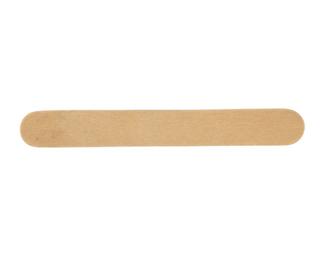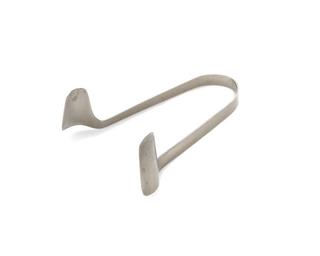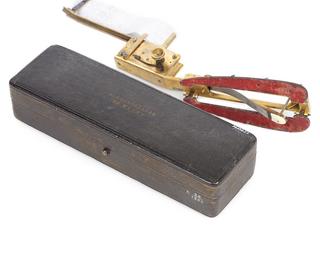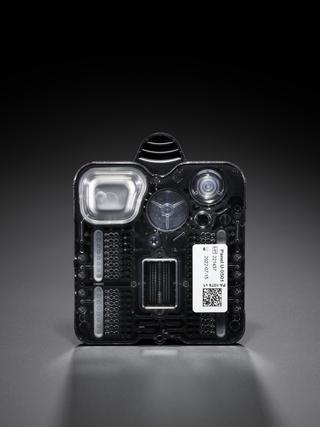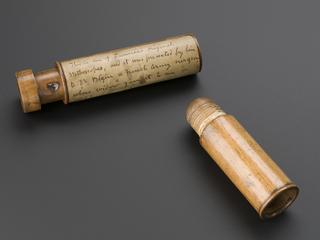
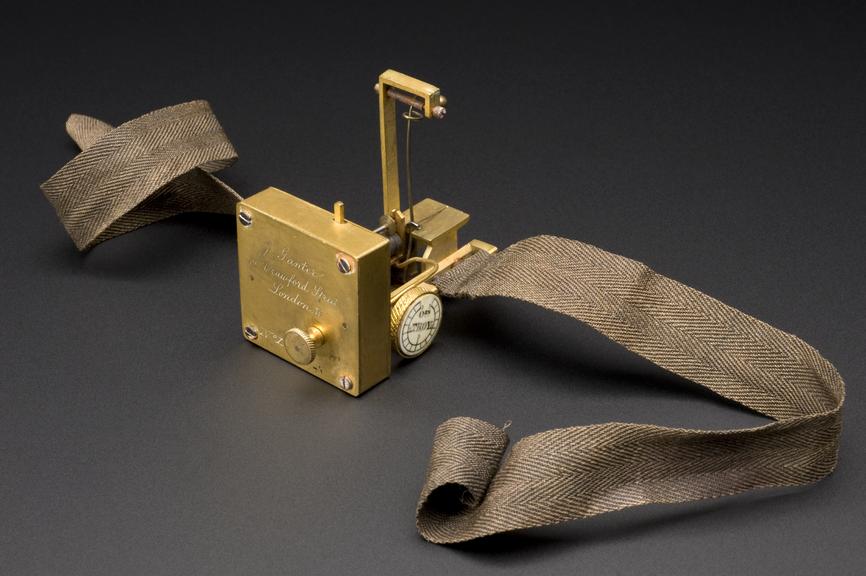
Sphygmograph which belonged to Dudgeon, by J. Ganter, 19 Crawford Street, London, England, 1876.
Blood pressure is measured and recorded using a sphygmograph. It is strapped to the wrist. The pulse beat is transmitted to a lever which records it on smoked paper. The first efficient sphygmograph was designed by Étienne-Jules Marey (1830-1904) in 1863. This example belonged to Dr Robert Ellis Dudgeon (1820-1904). He was a prominent figure in homeopathy. Dudgeon also made his own changes to Marey’s original design. It was made by instrument maker J. Gauter in 1876. In the late 1800s, physiology teachers used sphygmographs to visually demonstrate blood pressure. Instruments such as this were also valuable diagnostic aids. They were the predecessor of the modern arm cuffs physicians now use to measure blood pressure.
Details
- Category:
- Clinical Diagnosis
- Collection:
- Sir Henry Wellcome's Museum Collection
- Object Number:
- A600283
- Materials:
- brass (copper, zinc alloy), steel (metal), plastic (unidentified), textile and complete
- Measurements:
-
overall: 56 mm x 38 mm x 60 mm, 0.096 kg
- type:
- sphygmograph
- credit:
- Dudgeon, G.

